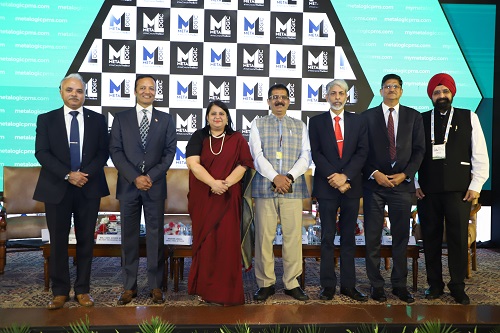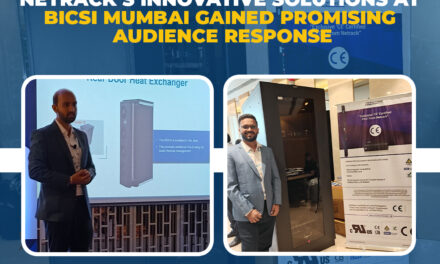Despite global headwinds, India’s steel sector showed a robust growth of ~8% in past years. This robust performance of the sector was achieved over significant demand generation from sectors which includes construction, infrastructure, automobile, engineering, and defense. This growth solidifies Indias position as the second-largest steel producer globally garnered on the back of government’s investment in these various infra projects.
Inaugural panel of Metalogics National Conference on Steel in Infrastructure
Addressing the growth of steel sector in a conference hosted by Metalogic PMS, Sh. Jyotiraditya Scindia in his video message mentioned that “The steel industry has been one of the bulwarks of India’s rapid infrastructure development. And with the Indian government targeting a $5 trillion economy by coming years, this is one industry whose fortunes look bright indeed, despite the recent turbulence due to the COVID-19 pandemic.”
Minister also urged industrial players to show maximum participation in infra development projects. “As we embark on various mass transit projects, including high speed rails and integrated bus tents, I would also like to urge all industry players to explore diverse participation models, such as public private partnerships, and by fostering collaboration between the public and private sectors. We can unlock synergies and expedite the implementation of transformative infrastructure projects,” he said.
“As we chart a course towards a brighter and more resilient future, let us remain steadfast in our commitment to harness the full potential of steel to build a nation that is prosperous, inclusive, and sustainable,” he concluded.
“Whichever country has built its infrastructure it has built from its own steel, one cannot import steel and built its infrastructure which India government realises,” mentioned Sh. Naveen Jindal, Chairman of JSPLwho also lighten the conference with his presence. He emphasized on recycling of steel byproducts like slag which can be used as replacement of fertilizers or for road construction which will help in reduction of CO2 emissions. He also urged the industry to produce more and more green steel and use it in infrastructure.”
Steel usage in the building, construction, and infrastructure domains has seen a consistent annual growth rate of 4.5% over the last four years. These positive trends are anticipated to persist in the near future, with an estimated demand increase of 7-8% in the building and construction sectors, and 8-10% in the infrastructure sector until FY 2025.
“There is need to pick up the pace of steel consumption in infrastructure to become a develop country without compromising on quality,” said Sh. Amarendu Prakash, CMD SAIL. He further added that engineering architects should also be having proper knowledge which helps in demand generation which can be provided by including the syllabus in academia.
The Schemes like PM Awas Yojana, Housing for all, etc. have so far supported steel demand in the past few years. In addition, this year’s fiscal budget coming up with Rs. 11 trillion capex, 11.1% more than previous year will also increase domestic demand for steel.
Increasing freight corridors in India has marked a milestone in India’s transportation infrastructure and has reduced transportation times. Since 2020, dedicated freight corridors have consumed ~18 million tons of steel.
“DFC is most important project to Indian Railways project whose estimated cost is approx. Rs. 1.25 lakh cr.,” mentioned Sh. Ravindra Kumar Jain, MD, Dedicated Freight Corridors Corporation of India Limited.
In terms of generating demand for steel, Sh. Ravindra Kumar mentioned that Indian Railways has massive investment plans for adding 40,000 tracks km in next 5 years which is capable of generating 9.60 lakhs tons of rail, 1.4 lakh tons of structural steel and 12 lakh tons of reinforcement steel, he further concluded by saying that DFC is ready to extend all possible support for transportation of steel.
Recently, Hon’ble Prime Minister Shri Modi inaugurated the 401 km stretch of the Eastern Dedicated Freight Corridor (EDFC) and the 244 km stretch of the Western Dedicated Freight Corridor (WDFC), constructed at a combined cost of Rs. 252.22 billion cost which has served a dual purpose of utilizing major volumes of steel and cement and at the same time eased the logistics burden on the industry.











